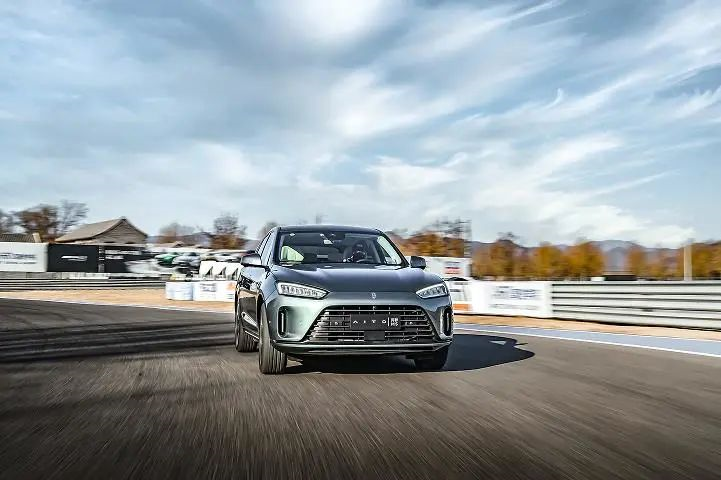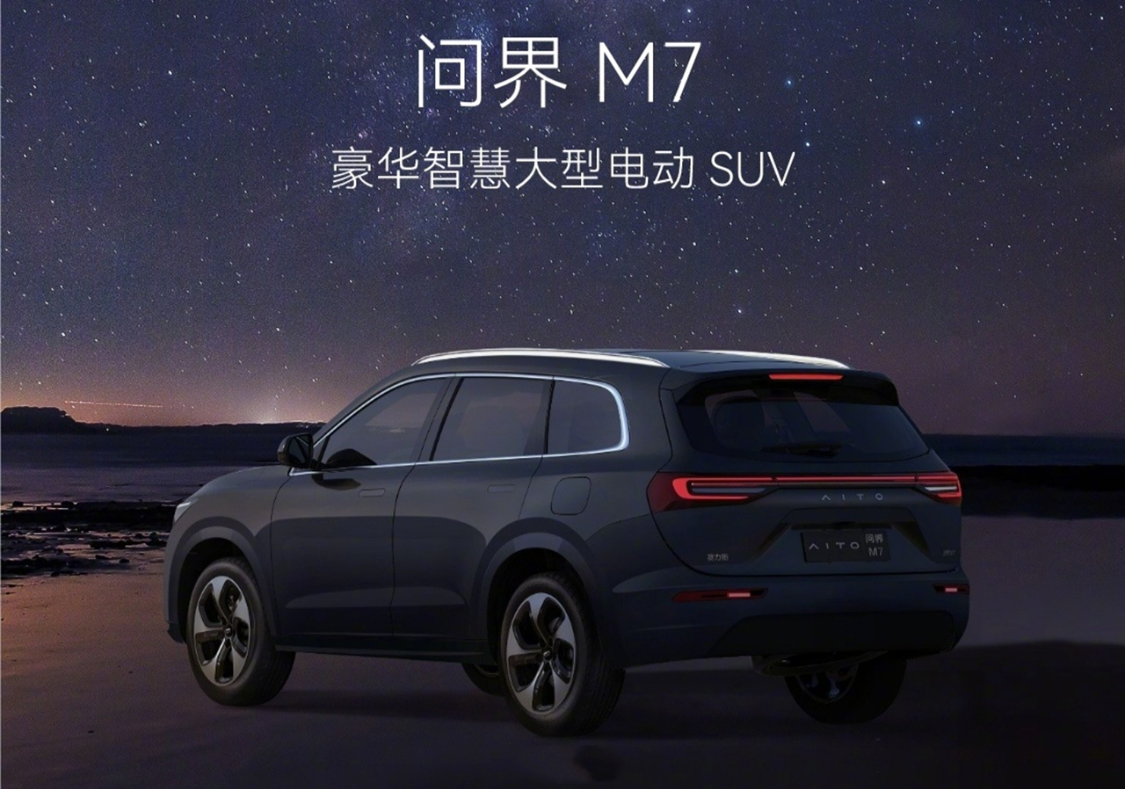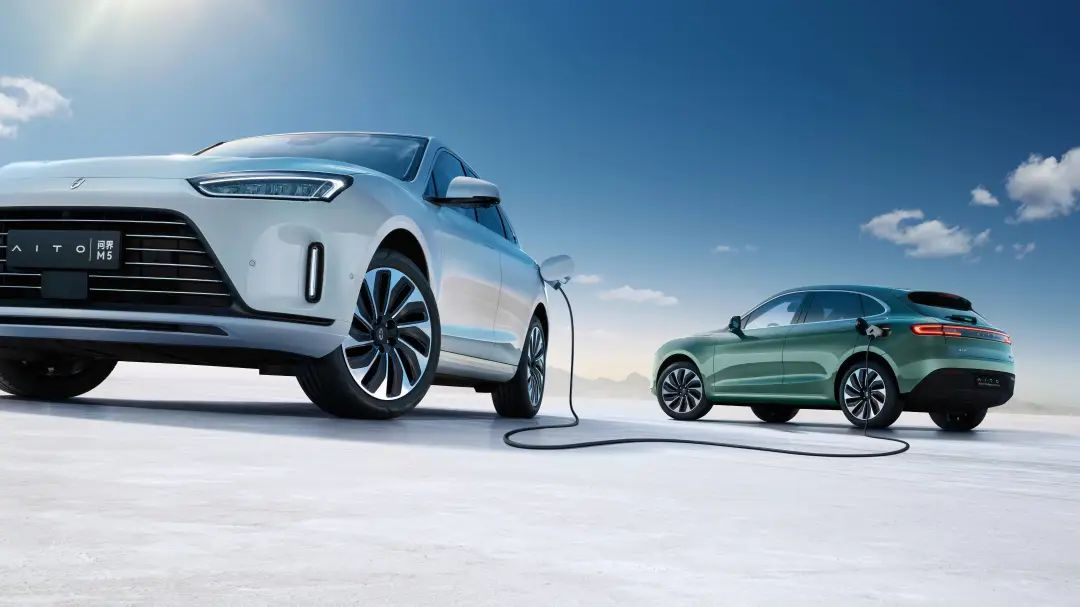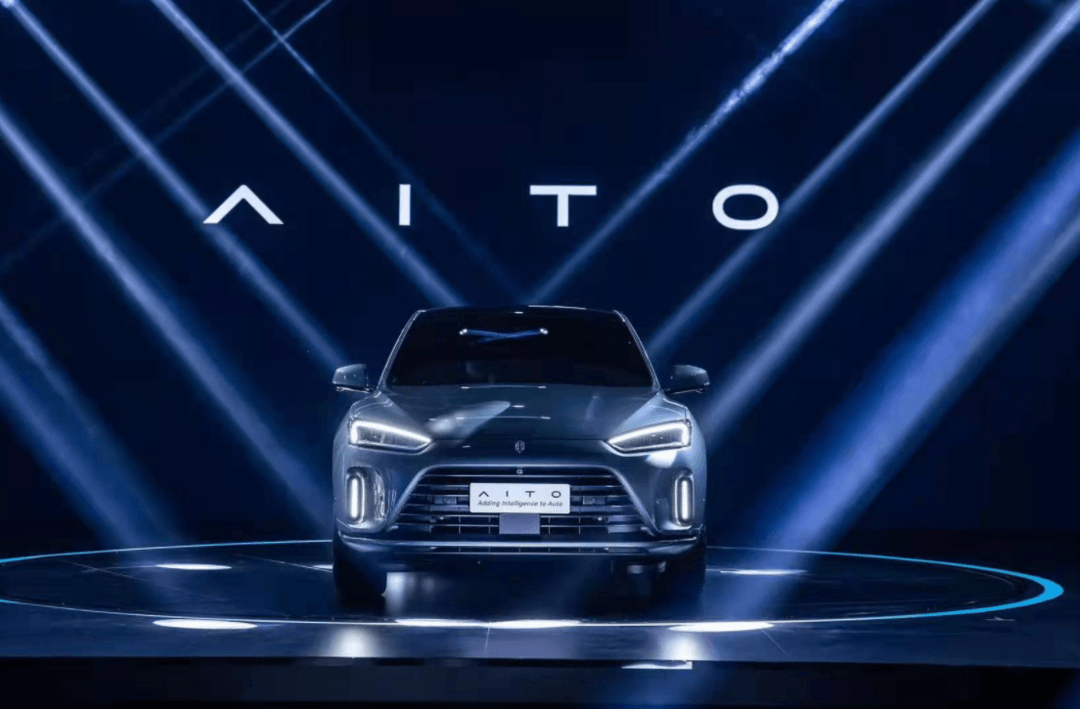Author | Zhang Jingtai
Since the debut of AITO AITO, Yu Chengdong’s goal is no longer just to surpass million-level fuel luxury cars such as Toyota Alphard. He has decided to directly compete with Tesla.
In the context of Tesla’s significant price reduction, AITO AITO couldn’t just sit and wait! On January 13, AITO AITO announced that it will launch a New Year feedback event for the first owners of the AITO M5EV and AITO M7, who have already received their cars before 8:30 a.m. on January 13, 2023. They will enjoy benefits worth 33,000-35,000 yuan in total.

This is not the first time that AITO AITO has followed Tesla’s lead in making price adjustments. In October 2022, after Tesla lowered its prices, AITO AITO launched a series of promotions. Although it wasn’t as direct as this price reduction, by giving away optional extras and other means, the discount amounted to nearly 30,000 yuan.
Media outlets contacted the investor relations department of Ceres as an investor and asked how to ensure profit after the price reduction. Relevant persons said that this is actually a problem of balancing price and volume. We also hope to consider the issue of profit from a perspective of quantity after occupying the market.
This frank expression clearly reveals AITO AITO’s trick: Yu Chengdong wants to directly compete with Musk, and intends to snatch users from Tesla by offering lower prices in exchange for sales.

For many new entrants to the electric vehicle industry, 2022 was a year of setbacks, with market sales generally not meeting expectations. However, among them, AITO AITO, a rising star, had relatively impressive performance.
Data released by AITO AITO showed that since the official delivery began in March 2022, more than 75,000 vehicles have been delivered to date, with an average monthly sales volume of nearly 10,000 vehicles, becoming the fastest-growing new energy vehicle brand.
Objectively speaking, AITO AITO’s performance after going public is pretty good, although it has not reached the sales target of 300,000 cars per year set by Huawei’s executive director and terminal BG CEO Yu Chengdong, nor even the adjusted target of “100,000 to 200,000” cars affected by chip shortages. However, it has become the biggest dark horse in the battle and reshuffle among new forces.# 2023, the year when many new car-making forces strive to win the battle, but for WENJIE, who has achieved small victories so far, there is still a long way to go to break through the life-and-death line of 300,000 vehicles.
The dilemma facing Yu Chengdong is how to improve the competitiveness of products, sales and service capabilities, and gain more market share. However, judging from the reality behind the sales of WENJIE AITO, there seems to be a question mark.
Decline in Product Competitiveness
When WENJIE M5, positioned as a mid-size SUV, was launched, it did impress consumers with Huawei’s technology and brand endorsement- especially the 15.6-inch central control screen and Huawei’s HarmonyOS, which is the most attractive feature of the entire car.
In practical use, the WENJIE M5 machine can achieve smooth and seamless navigation, music, and video services between the phone and the car machine, just like a mobile phone, which can be regarded as the ceiling of the current car machine system.
Of course, WENJIE M5’s configuration is also very sincere, with a full range of active safety warning systems, automatic parking, leather steering wheel and leather seats, electric tailgate, remote start, active noise reduction, Huawei SOUND 19-speaker sound system, etc.

However, after the hot sale during the initial launch, WENJIE M5’s sales volume began to decline overall. In August 2022, WENJIE M5’s sales volume reached a historic high of 7,372 vehicles, and never surpassed this number again, even after the delivery of the WENJIE M5 EV version at the end of October, there was no significant improvement.
WENJIE M7, positioned as a mid-to-large sized SUV, is a heavyweight product that Yu Chengdong claims that “it will completely surpass million-dollar luxury cars such as Toyota Alfa and Lexus LM.” At the product launch conference, some important performance parameters were compared with other competing products to show that this is a revolutionary product.
Like WENJIE M5, WENJIE M7’s sales volume was also at its highest before decreasing. After reaching 5226 units in October, it began to decline.
 Why is Huawei’s AI technology not enough to revitalize the development of the AITO automotive industry, leading to a decline in product competitiveness? The reason is simply that the technology for producing cars has room for improvement.
Why is Huawei’s AI technology not enough to revitalize the development of the AITO automotive industry, leading to a decline in product competitiveness? The reason is simply that the technology for producing cars has room for improvement.
Although Huawei has successfully contributed to the AITO automotive industry, it is not proficient in the basic aspect of car manufacturing, which is the car platform. For example, there is a brand’s CHN platform, also involved with Huawei, that can produce sedans, SUVs, MPVs, and crossover vehicle models within the 2800-3100mm wheelbase range.
However, the AITO automotive industry currently does not have this type of platform technology. There are rumors that the AITO M5 and M7 prototype cars are based on Dongfeng Fengguang ix5 and ix7, respectively. Although the validity of this claim is still questionable, the production speed of AITO M5 and M7 does suggest that they were not based on a completely new car platform.
One of the most evident differences would be the length, width, height, and wheelbase of AITO M7. At 502019451775mm, its length exceeds 5 meters, which is neither the length of a medium nor a large-sized SUV, but a full-sized SUV. Based on the standard size of a full-sized SUV, cars at or beyond 5 meters often have wheelbases of about 3 meters.
However, AITO’s M7 only has a wheelbase of 2820mm, which is significantly shorter than most of its competitor’s wheelbases like those found in the Ideal L8, the ID.6 CROSS, and the NIO ES8. Even most cars that have a smaller body length, still have wheelbases of about 2.9 meters or more.
Wheelbase is the most crucial factor affecting passenger space, especially concerning the majority of 2- and 3-box passenger cars with their passenger seats between the front and rear axles. A longer wheelbase increases passenger’s longitudinal space, allowing for greater foot space that increases vehicle ride comfort. Although wheelbase is not the sole determining factor of a car’s interior space, it’s still a fundamental factor.
Considering the car length, it would be possible for the AITO M5 wheelbase to exceed 3 meters and surpass 2.9 meters without issue. The NIO ES8 has a length that’s also over 5 meters, yet its wheelbase exceeds 3 meters.
Comparing the AITO M7’s car dimensions with Dongfeng Fengguang ix7, which are alike at 493019351765mm and 2810mm, respectively, the similarity is hard to ignore.

Chinese car consumers are no longer ignorant and are difficult to be dazzled by fancy external appearance. Whether the interior space is enough or not, they can tell by comparing it personally through test rides. Among the currently comparable products in the same level, WENJIE M5 and M7 do have a slight advantage in the car system, but in other aspects, there is no significant advantage.
Huawei has repeatedly stated that it does not produce cars, which means that AITO WENJIE’s platform technology mainly relies on Ceres, and the pure electric drive extension platform (DE-i) it creates still has a lot of potential worth exploring.
Difficulty in Maintaining Channel Advantages.
As a general rule, the key factors that determine the success of a car brand are product strength and channel capability. When the product strength does not have an obvious advantage, the channel capability will determine the success or failure.
In the current situation where product strength does not have top-notch advantages, AITO WENJIE can still achieve annual sales of more than 75,000 vehicles, mainly relying on the advantages of its channels.

According to data compiled by consulting firm “Jelurida,” as of the end of the third quarter of 2022, among the new power companies with pre-sales functions, WENJIE ranks first in terms of sales points that have been in operation for less than a year. There are already more than 1,000 such points.
The WENJIE official website shows that their channels mainly consist of two types: Experience Center and User Center. Similar to most new forces, the Experience Center is mainly responsible for customer experience and pre-sales links such as ordering a car, and the User Center adds delivery and after-sales links. Among them, the Experience Center is divided into three different types: Huawei authorized stores, Huawei Intelligent Life Halls, and AITO experience showrooms, while all User Centers are AITO authorized user centers.
Obviously, the extensive channels have greatly improved WENJIE’s brand awareness and sales volume. However, if calculated by an average of 1000 sales outlets, the average annual sales volume of a single sales outlet is only 75 vehicles, which is obviously lower than that of competitors such as XPeng. Furthermore, as cars are large items, they will take up most of the space of the sales store. If we calculate area efficiency, it may be even less efficient.
Even though the average sales volume of a single store is low, AITOAITO still needs to rely on Huawei’s sales channel. However, this exclusive channel advantage may also be difficult to maintain in the future.

Based on various information currently available, brands such as Avita, Chery, and JAC will also adopt the intelligent selection mode to enter Huawei stores.
This means that in the future, a Huawei store will sell more than one brand of automotive products, and these products will compete in the same store and may all use Huawei technology. At this time, AITOAITO will not only lose its channel advantage, but also its existing Huawei technology advantages will be greatly weakened. If the competition is based on the basic skills of car manufacturing, AITOAITO may fall behind first-line domestic brands such as Changan and Chery.
Making money is a big test
For automotive companies, technological innovation, developing new products, and expanding channels are important, but the prerequisite is to have sufficient cash flow and achieve profits as soon as possible, otherwise they will be stuck or starved to death.
Although AITOAITO has been empowered by Huawei, it still belongs to Sailesi. Sailesi is the name of Xiandai Xinkuang Group Co., Ltd. after the name change. Although its sales volume has soared due to cooperation with Huawei and its revenue is also continuously increasing, Sailesi accumulated losses of RMB 2.67 billion in the first three quarters of 2022, which is the fifth consecutive year of net loss.

Sailesi stated that the net loss was mainly due to still being in the ramp-up stage of new product launches in 2022, and scale effects have not yet been achieved. Although the sales volume of the Sailesi AITO series new energy vehicles increased significantly in the first three quarters of the year, expenses and taxes also increased accordingly. At the same time, influenced by factors such as continuous increase of raw material prices such as chips and power batteries, continuous investment in product development and market promotion, etc.
However, one financial report data of Sailesi is particularly surprising, which is the sales expense. The sales expense in the first three quarters of 2022 was RMB 3.083 billion, an increase of 306.99% year-on-year, which is the highest for the same period in history and three times the R&D expense of RMB 0.906 billion. Based on this calculation, Sailesi’s sales expense ratio is as high as 13.3%.“`
Compared with other car companies, WEY’s overall sales and management expense ratio is relatively high at about 20%. In contrast, the overall expense ratios of Gelly, Great Wall, and BYD are relatively low. For example, BYD’s sales expense ratio is only 3%, Gelly’s is 6%, and Great Wall’s is 4%, with the total of sales and management expenses at around 10%.
It is not difficult to find that WEY’s sales expense ratio is not high among new car makers, but different from other new car makers who mainly use self-operated sales stores, WEY’s cooperation with Huawei stores is more similar to the traditional 4S store model. Therefore, its sales expense ratio should be closer to Gelly, Great Wall, and BYD.
The reason may be that WEY is possibly sharing the sales revenue with Huawei, and Huawei obtains more revenue than traditional 4S stores, which directly leads to WEY’s high sales expense ratio.
Increasing revenue without increasing profit is obviously unsustainable for a company. Zhang Zhengping, chairman of WEY, once stated at a special shareholders meeting held in late July 2022: “From a profit perspective, 2022 is a year in which we invested relatively heavily. Besides the Chongqing factory being put into production, the Phoenix factory also began to put into production. From a financial statement perspective, this year’s second half is two products and two factories. In addition, M9 will be launched next year, and the team reserved for it is reflected in this period. It may not be profitable as quickly this year. In terms of the company’s goals, we definitely hope to achieve profitability as soon as possible and strive to achieve this goal next year.”
For WEY to turn losses into profits in 2023, it clearly needs larger sales volumes. 10,000 or 20,000 vehicles are not enough. As the main force of products, AITO Vanke also needs to quickly improve its product competitiveness, launch more new products on the market, and improve its own channels. For a car brand with shallow accumulation, this is undoubtedly a huge challenge.
“`
This article is a translation by ChatGPT of a Chinese report from 42HOW. If you have any questions about it, please email bd@42how.com.
